How to, Indian food
How to cook rice
One of the ‘Top 10’ questions relating to food, is ‘how to cook rice’, and it is one of the culinary questions that I am regularly asked to explain.
Although we explain how to cook rice on our cookery workshop, it is still a subject worthy of further clarification.
As someone of North Indian heritage, rice is an ingredient that was one of the first things I learnt to cook and, (after bread such as Roti), is considered a staple within our diet, and therefore a basic ingredient for us.
As a British woman of Indian origin, and someone that works in the food industry, the number of people I come across that find rice to be a confusing and mysterious ingredient has always been astonishingly high. When I look at how the cooking of rice is presented in the Western media and all the apparent ‘rules’ for cooking it, (that we as Indian woman have never seen in our homes), I am then not surprised at the high percentage of people that are completely intimidated at the thought of cooking rice!
Common mistakes
1. Not washing the rice… or… assuming it’s pre-washed, or…that it doesn’t matter (it does!)
2. Not measuring the amount of water used for cooking the rice…or…boiling rice in
an excessive amount of water and then draining off the excess.
3. Rinsing rice after it has been cooked! (if you ever did this in front of my mother or
late grandmother, I don’t think they’d let you back in their kitchen!)
4. Using any brand or type of rice. Choose the very best quality rice and we always
cook with white Basmati rice. When buying rice, always try to buy from an Asian
brand or Asian supermarket if you can. Two brands that we love are ‘Laila’ or ‘Kohinoor’.
So here are some key issues and pointers when cooking rice…
Taking time for preparation of the rice before cooking:
- It is important to wash the rice, to remove starch.
- Wash the rice in cold tap water (making sure to only agitate the grains in the water and not to actually rub the grains).
- Wash the rice several times until the water runs clear, then it is ready to use.
- Note: If you have an old packet of rice that has been in the cupboard for a long time, the starch will have built up, and so you will need to soak this rice for 30 minutes after you have washed it.
- Drain off the water and it is ready to use.
Rice to water ratio: our family uses the absorption method, whereby we use double the volume of water to rice (i.e. 1 cup of rice and 2 cups of water)
These are the few basic principles that you need to follow, and you will soon be
confidently cooking rice.

Jeera Rice recipe
Jeera rice (or ‘cumin’ rice in English) is part of the repertoire of daily recipes in Northern Indian households. Rice (for Punjabis) is the accompaniment to meat dishes and one dhal dish in particular – Rajma Dhal (Kidney bean dhal – all other dhals are traditionally served with Roti).
Ingredients
– 1 cup of rice (250g)
– 2 teaspoons of ghee or sunflower oil (please do not use
rapeseed oil or olive oil as these have a taste on their
own and will alter the flavour)
– 1 tablespoon/large pinch of cumin seeds
– 1/4 teaspoon turmeric
– 3/4 teaspoon salt
– 500ml cold tap water
Method
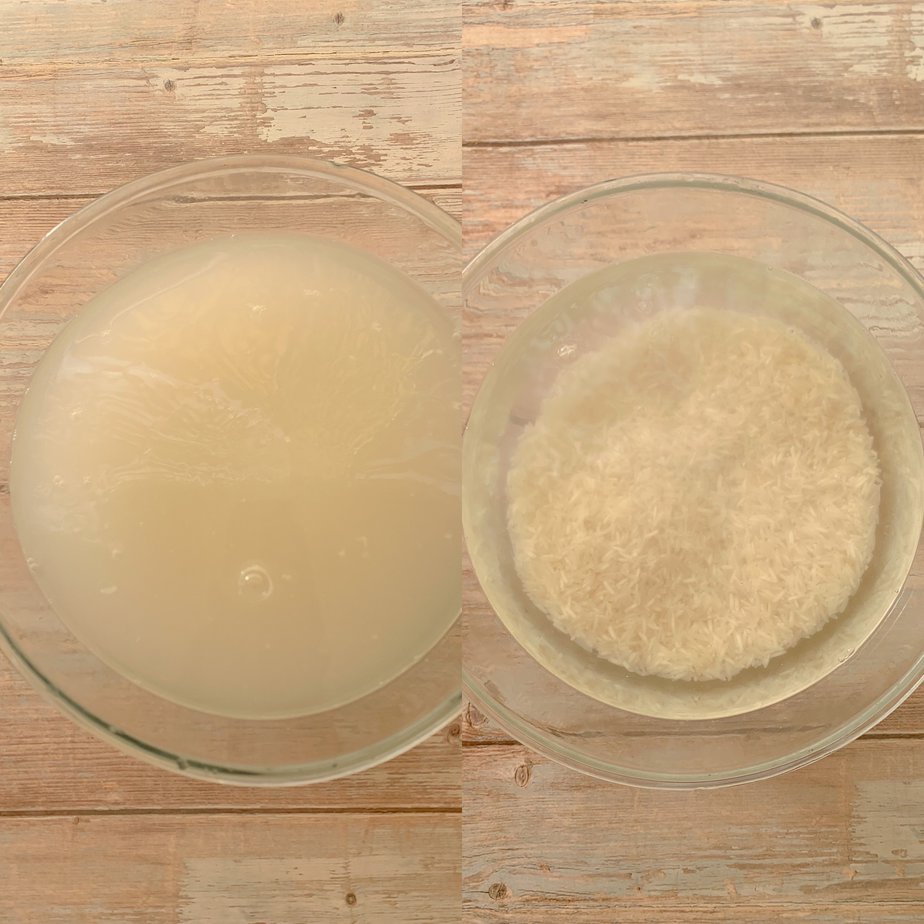
1. Put the rice into a large bowl and wash it 5-6 times (or till the water runs clear). Once the water runs clear, drain the rice well. You must not skip this step.

2. Heat a saucepan over a medium to low heat. Add the ghee (or sunflower oil) to the pan. Once the ghee has melted, add in the cumin seeds, turmeric, and salt. Stir and gently sizzle the spices for a couple of minutes, (be careful not to let the cumin seeds burn as they can catch very quickly).
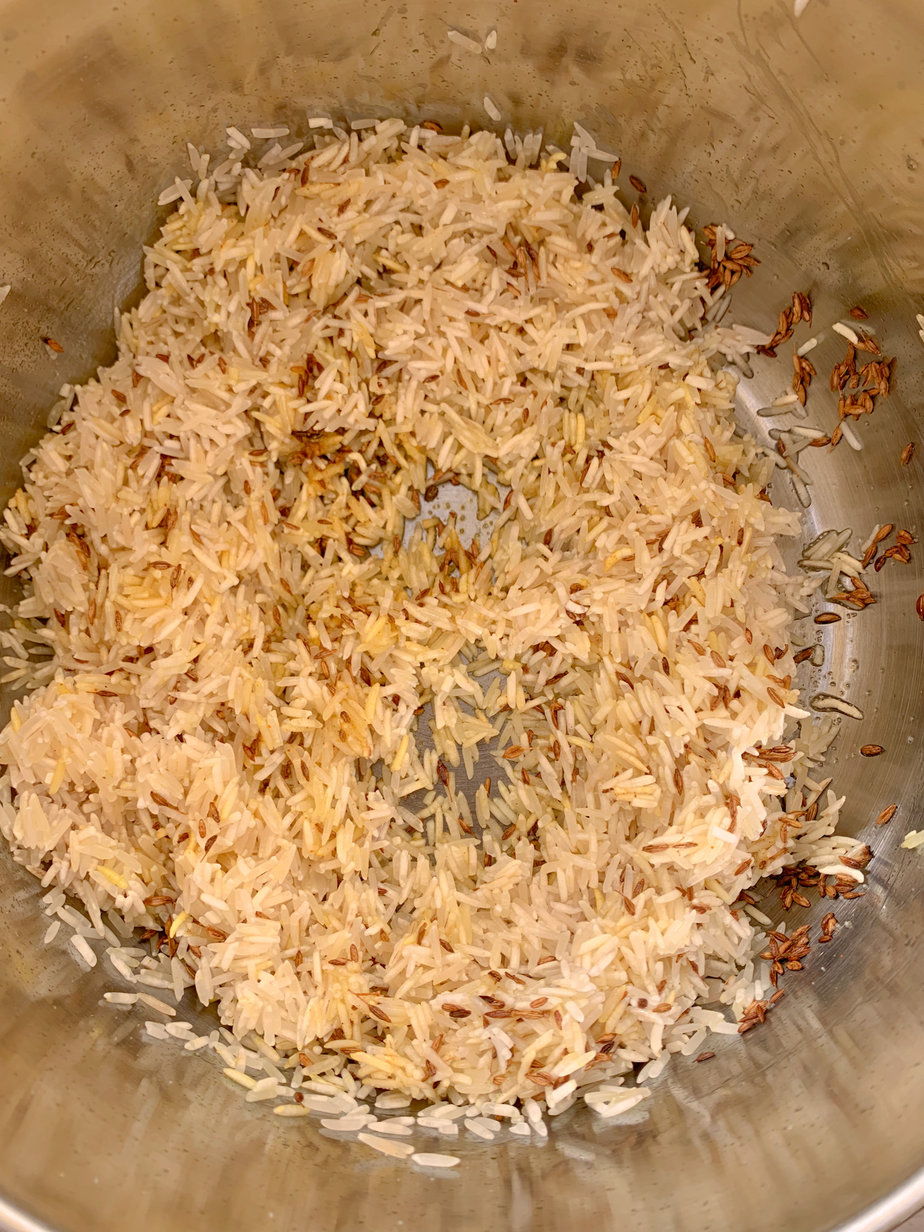
3. Add the washed & drained rice, and ‘dry’ cook the rice in the ghee and spices over the heat for about 1-2 minutes (so do not put the water in the pan), until all the grains are lightly coated in the ghee or oil. The rice will almost become slightly sticky – this is normal. Keep the rice constantly moving during this dry cooking process.

4. After 1-2 minutes of dry cooking the rice, add 500ml of tap water, (2 parts water to 1 part rice), and stir. Make sure all the grains of rice are in the water and not up the sides of the pan or coating the back of the spoon. Turn the temperature up to the highest setting to bring the rice to the boil. As soon as it comes to the boil, turn the temperature down to the lowest setting and put the lid on the saucepan. Leave to cook until all the water has been absorbed (depending on your cooker, this will take approximately 10-15 minutes).

5. As soon as all the water has been absorbed into the rice, it is cooked, so, *Note: this is the absorption method.
To check whether the rice has finished cooking, take a fork and gently place it between the inside edge of the saucpean and the rice. Gently pull the rice to one side to reveal the base of the saucepan and if all the water has been absorbed, it is cooked.

6. Run a fork through the rice. This stops it from going sticky and forming a solid clump at the bottom of the saucepan and keeps it light and fluffy. Serve hot.
In case you are more of a ‘visual learner’, here’s our video link on the above method…
Our rice products.
Depending on where you live, rice may only be available to you in supermarkets and these brands are not always the premium ones stocked by specialist Asian retailers.
As mentioned we always use certain brands of premium Rice – white Basmati only! Often these are only available in large quantites, so we produce sachets of rice available as part of our meal kits range, so that our customers can try a small quantity first, or on the other hand have everything conveniently ready including spices to make perfect Jeera rice as well as Pilau Rice.
Dinner kits
Dinner kits
Breads & Sides
Breads & Sides
Individual Meal Sachet Mixes
Dinner kits

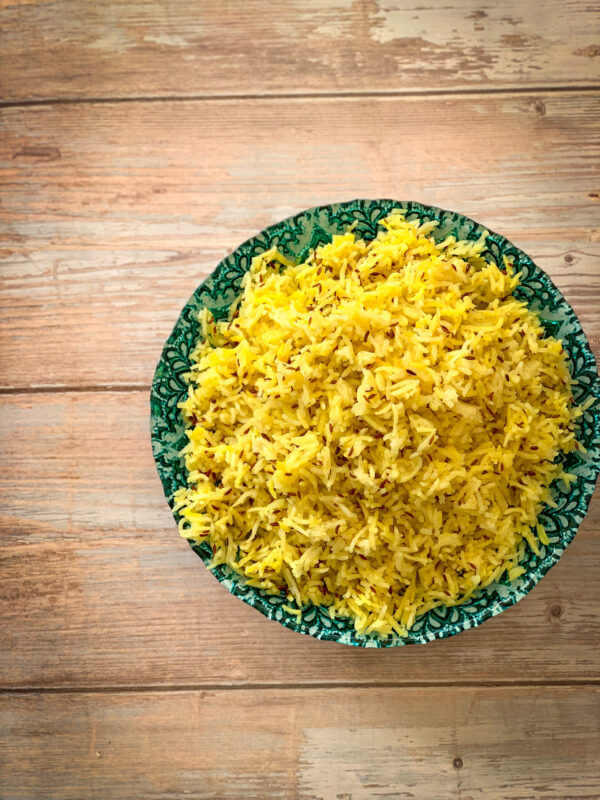


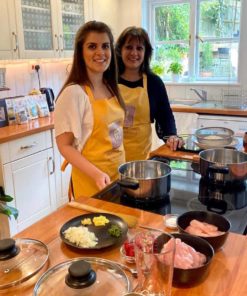



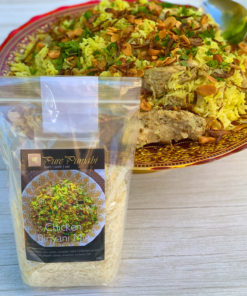

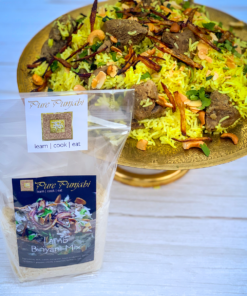

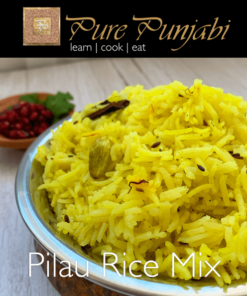

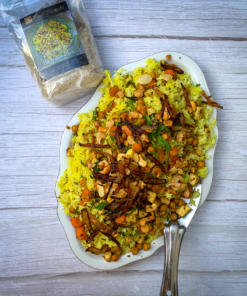


Enjoyed watching your video on cooking rice, found it very useful. Many thanks.